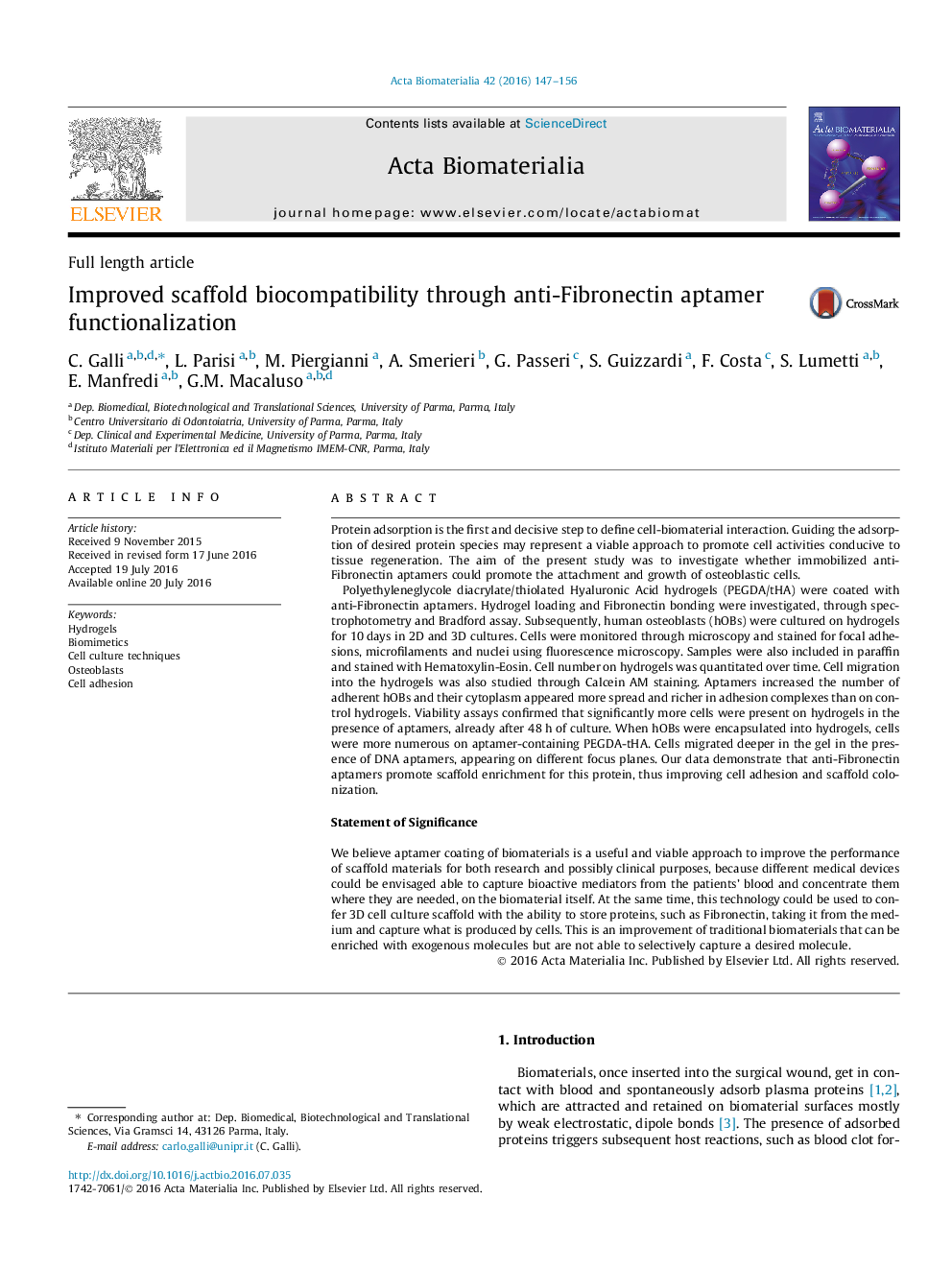| کد مقاله | کد نشریه | سال انتشار | مقاله انگلیسی | نسخه تمام متن |
|---|---|---|---|---|
| 6450206 | 1415944 | 2016 | 10 صفحه PDF | دانلود رایگان |
Protein adsorption is the first and decisive step to define cell-biomaterial interaction. Guiding the adsorption of desired protein species may represent a viable approach to promote cell activities conducive to tissue regeneration. The aim of the present study was to investigate whether immobilized anti-Fibronectin aptamers could promote the attachment and growth of osteoblastic cells.Polyethyleneglycole diacrylate/thiolated Hyaluronic Acid hydrogels (PEGDA/tHA) were coated with anti-Fibronectin aptamers. Hydrogel loading and Fibronectin bonding were investigated, through spectrophotometry and Bradford assay. Subsequently, human osteoblasts (hOBs) were cultured on hydrogels for 10Â days in 2D and 3D cultures. Cells were monitored through microscopy and stained for focal adhesions, microfilaments and nuclei using fluorescence microscopy. Samples were also included in paraffin and stained with Hematoxylin-Eosin. Cell number on hydrogels was quantitated over time. Cell migration into the hydrogels was also studied through Calcein AM staining. Aptamers increased the number of adherent hOBs and their cytoplasm appeared more spread and richer in adhesion complexes than on control hydrogels. Viability assays confirmed that significantly more cells were present on hydrogels in the presence of aptamers, already after 48Â h of culture. When hOBs were encapsulated into hydrogels, cells were more numerous on aptamer-containing PEGDA-tHA. Cells migrated deeper in the gel in the presence of DNA aptamers, appearing on different focus planes. Our data demonstrate that anti-Fibronectin aptamers promote scaffold enrichment for this protein, thus improving cell adhesion and scaffold colonization.Statement of SignificanceWe believe aptamer coating of biomaterials is a useful and viable approach to improve the performance of scaffold materials for both research and possibly clinical purposes, because different medical devices could be envisaged able to capture bioactive mediators from the patients' blood and concentrate them where they are needed, on the biomaterial itself. At the same time, this technology could be used to confer 3D cell culture scaffold with the ability to store proteins, such as Fibronectin, taking it from the medium and capture what is produced by cells. This is an improvement of traditional biomaterials that can be enriched with exogenous molecules but are not able to selectively capture a desired molecule.
114
Journal: Acta Biomaterialia - Volume 42, 15 September 2016, Pages 147-156
